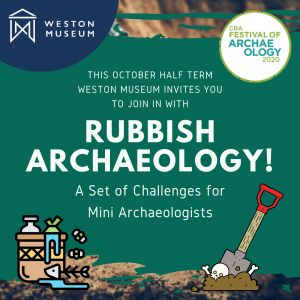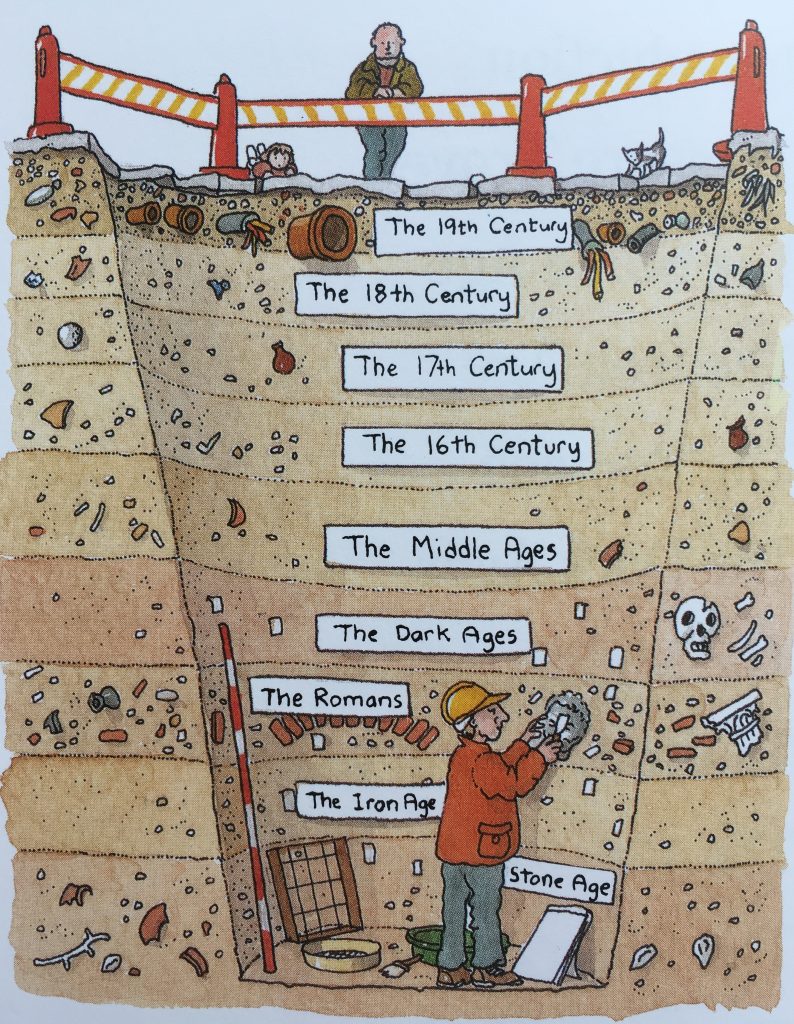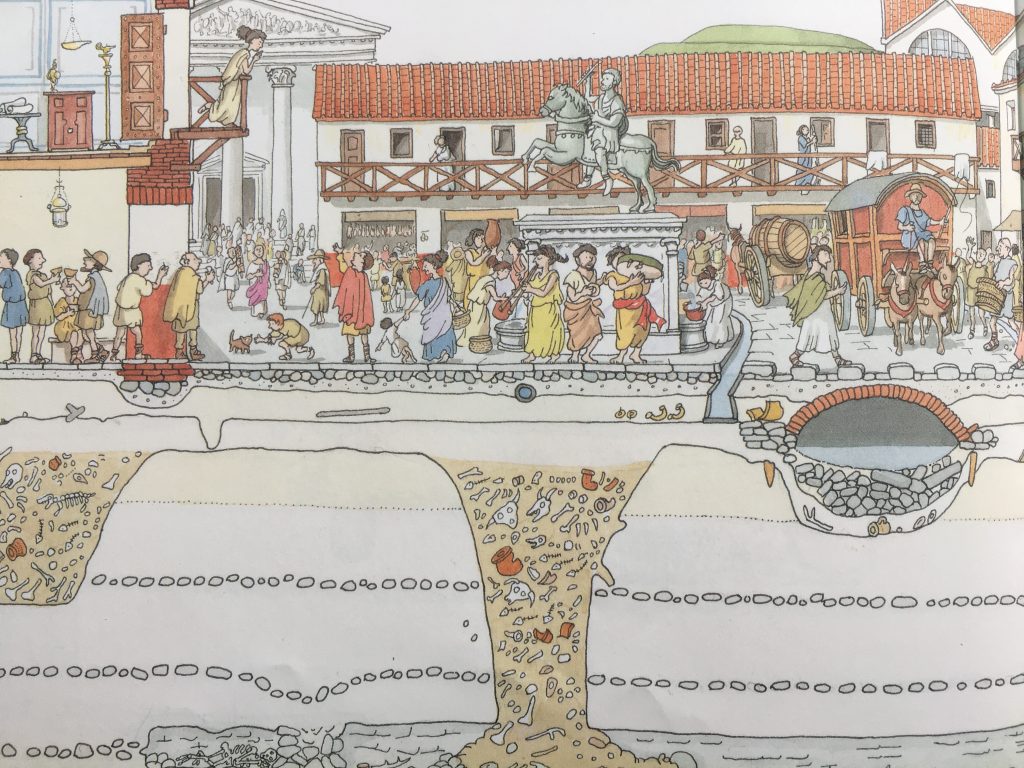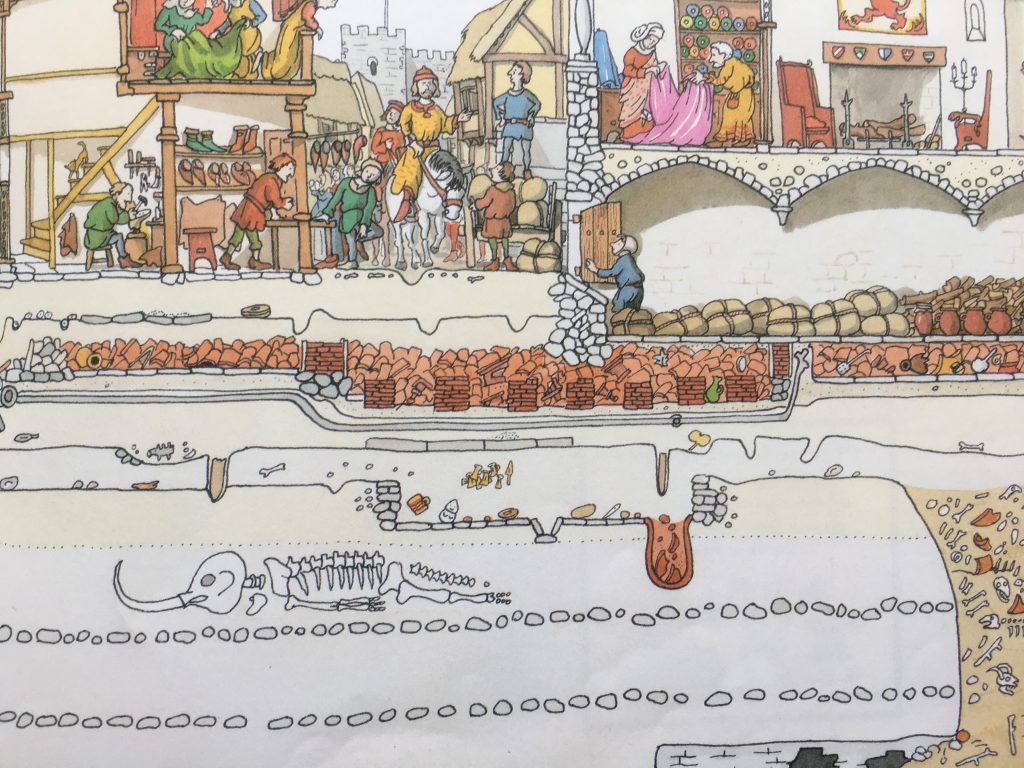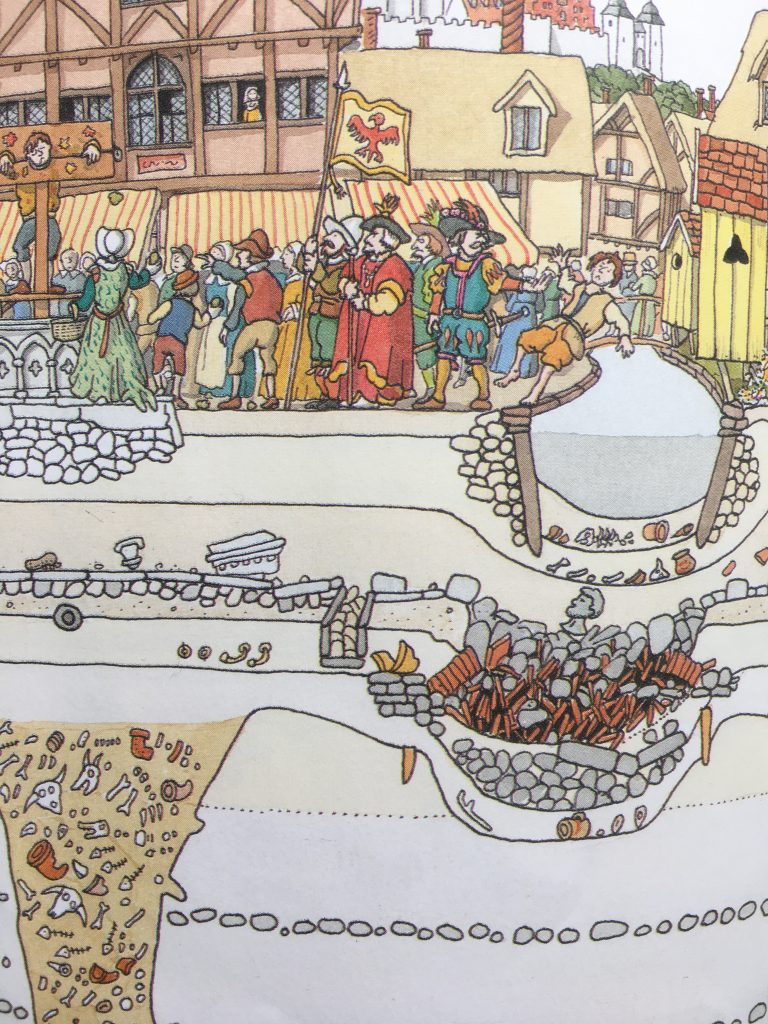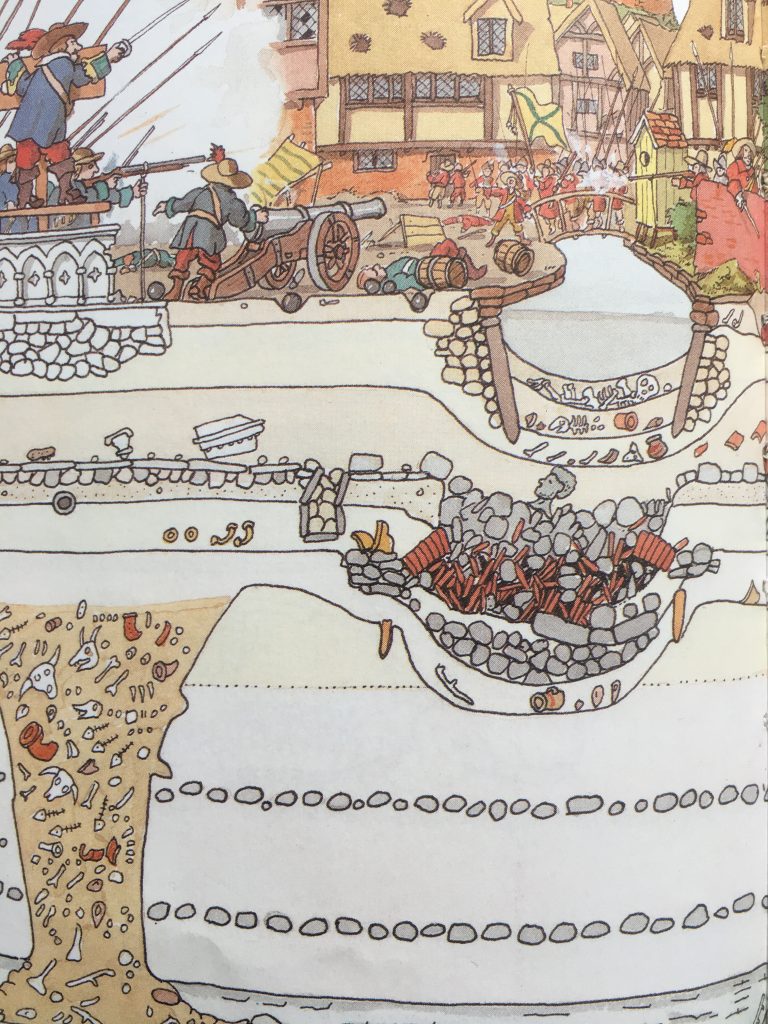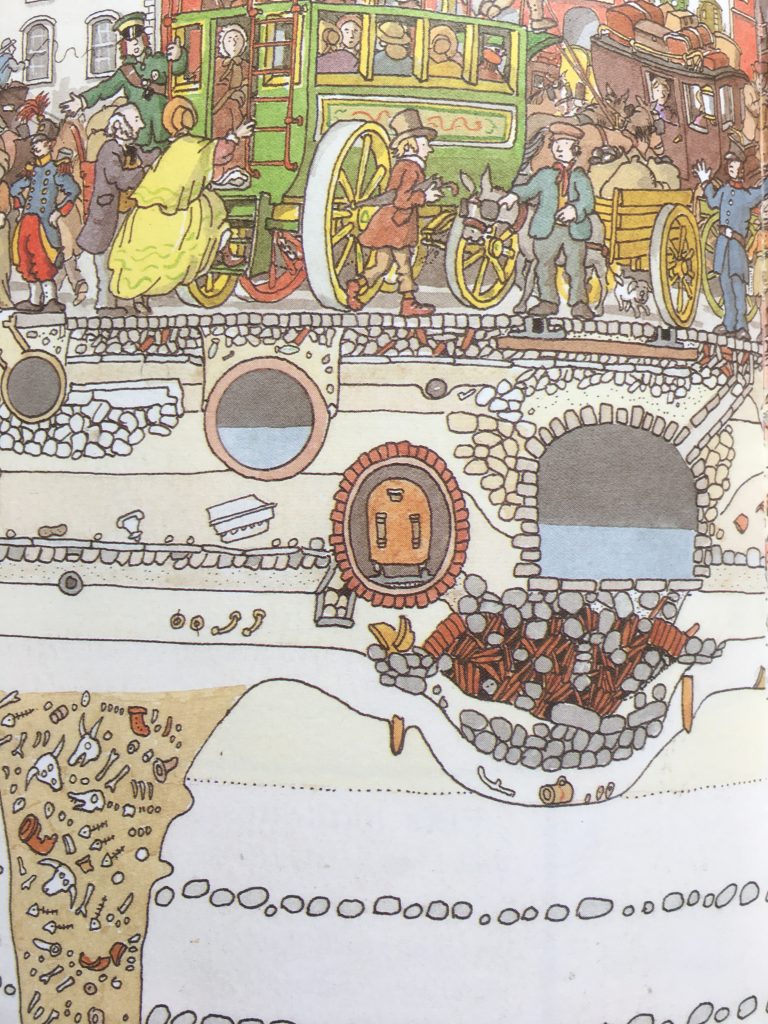Rubbish Archaeology Week – October Half Term
Rubbish is Archaeology! That might sound odd, but it’s true. Lots of things that are found during archaeological digs are actually things that are intentionally discarded. But far from being worthless, these things can tell us a great deal about the people who threw them away. They can tell us about what those people ate, how they lived, what they wore and many other things.
It’s the second part of the Council for British Archaeology’s Festival of Archaeology and this week the theme is ‘Climate and Environment’. Inspired by this, we are thinking about common archaeological finds; what they are made of and how long they usually survive in the ground. We will also be thinking about the things we throw away today; what they are made of and how we can reduce the negative impact our waste is having on the environment.
Rubbish Archaeology Challenges:
Dig At Home
Create your own mini archaeological dig in your back garden.
Decide where you are going to dig and mark out a test pit of 1 metre by 1 metre. Dig down to see what you can find; use an archaeological grid system to record your finds and then sort and date them.
There are lots of great resources online to give you information on how to create an authentic dig:
- Head to Surrey County Council’s website and download the ‘Archaeology Activity Pack – Dig your own test pit’ – https://www.surreycc.gov.uk/culture-and-leisure/archaeology/education-and-archaeology/archaeological-resources-for-teachers-miscellaneous
- Leicester University – http://leicsfieldworkers.co.uk/wp-content/uploads/2019/06/Leicestershire-Fieldworkers-Fieldwork-Guide-3-How-to-dig-an-archaeological-test-pit.pdf
- Take a look at the North Somerset Historic Environment Record and switch on the ‘Monuments’ layer to see what archaeology and historic buildings have been recorded in your area – http://map.n-somerset.gov.uk/her.html
- Excavation & finds processing – https://www.yac-uk.org/userfiles/file/YAC_Leaders_Weekend_Fieldwork_Guides.pdf
- How to identify finds from your test pit: Head to the Portable Antiquities Scheme website and take a look at the A-Z guides on identification of objects that you might recover from your test pit – https://finds.org.uk/counties/findsrecordingguides/
- Making sure you tell the right people about what you’ve found: Report your discoveries to the local Finds Liaison Officer (adams@bristol.gov.uk) and the North Somerset Council’s Senior Archaeologist (DM.Archaeology@n-somerset.gov.uk). Reporting your finds means they can be added to the Historic Environment Record and can help inform others of where archaeology is located.
Make Some Stratigraphy Craft
Learn about how archaeological finds and evidence are deposited in layers, called Stratigraphy, by making a Stratigraphy Jar or a Stratigraphy Cake.
Stratigraphy is a key part of archaeology. It is the result of what geologists and archaeologists refer to as the process of ‘stratification’ – the process of layers of soil and debris from human activity being laid down on top of one another over time.
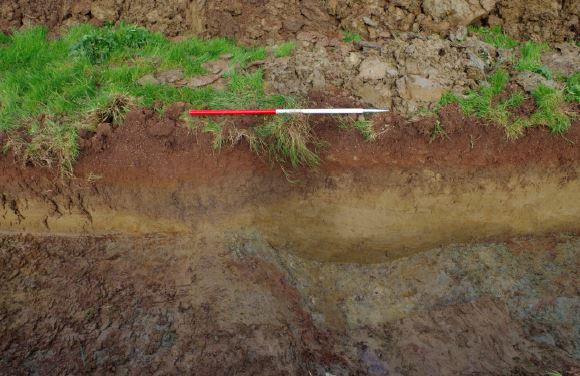
Image of section of archaeological trench showing stratigraphy
An easy way to think about stratigraphy is if you were making lasagne! You first put down a layer of pasta, then sauce, then pasta, then another layer of sauce, and so on. There is no way for you to be able to put the bottom layer of pasta down before the sauce and still maintain the same sequence or location of these different layers. This works the same for archaeology and helps to determine a sequence of events.
Understanding the sequence of how soil was deposited can help archaeologists to date features in the ground, and help to understand timelines of human activity at a particular location. If you could cut a big slice down into the ground then you would see all of these layers piled on top of each other, just like this photo from an archaeological dig or in the brilliant book ‘A Slice Through A City’ by Peter Kent.
- Image scanned from ‘A Slice Through A City’ by Peter Kent; Macdonald Young Books Ltd, 1995
- Images scanned from ‘A Slice Through A City’ by Peter Kent; Macdonald Young Books Ltd, 1995
- Image scanned from ‘A Slice Through A City’ by Peter Kent; Macdonald Young Books Ltd, 1995
- Image scanned from ‘A Slice Through A City’ by Peter Kent; Macdonald Young Books Ltd, 1995
- Image scanned from ‘A Slice Through A City’ by Peter Kent; Macdonald Young Books Ltd, 1995
- Image scanned from ‘A Slice Through A City’ by Peter Kent; Macdonald Young Books Ltd, 1995
You can have a go at drawing your own versions of Stratigraphy layers and imagining the different remnants deposited by different eras. You can also make your own Stratigraphy craft pieces by heading to the Young Archaeologists’ Club website, where there are guides to make either a Stratigraphy Jar – https://www.yac-uk.org/activity/make-a-stratigraphy-jar or a Stratigraphy Cake – https://www.yac-uk.org/activity/make-a-stratigraphy-cake.
Take A Photo
Enter the CBA Photography Competition and photograph your own version of ‘Human Impact’.
Your photograph could highlight anything that shows the impact humans have had to our wider landscape, it could be anything from standing stones to the impact of climate change. Head to the Festival of Archaeology website for more details – https://festival.archaeologyuk.org/photography-competition-humanimpact
Collect Your Rubbish
Collect up your household’s rubbish over the course of a week to see what waste you are sending out into the wider world.
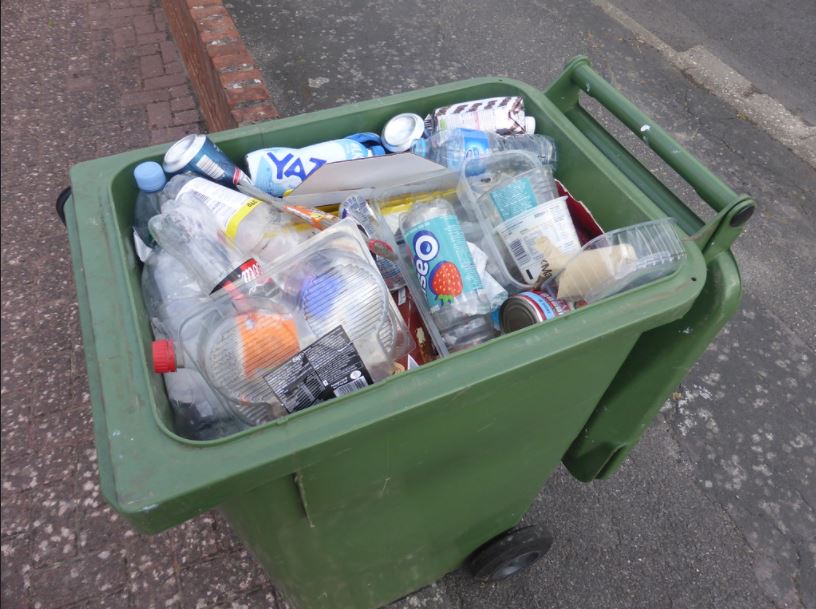
Full recycling bin
Just before bin day comes around, evaluate what rubbish your family have generated. Sort it into different types according to what material it’s made off, then think about how long each material sticks around in the environment. Finish up by sorting it all out into what can be composted, reused, recycled or must be thrown away.Also remember to think about the things that might not have made it to the recycling box; do you have a food waste bin or a bathroom bin? You might not want to hang on to some things until the end of the week, but don’t forget about them when you’re considering what waste you create (even the items you might flush down the toilet have to go somewhere!).
What might someone be able to tell about your family just from looking at the waste you create? Could they tell how many people are in your household or their ages? What are people’s favourite foods or hobbies? You could even decide who in your family creates the most rubbish and who is the least wasteful member.
This is similar to what Archaeologists do when they find the rubbish remains of a household or other site. They examine them to try to work out things about the people that left the rubbish behind. This becomes more of a puzzle to do over time as more of the items rot away, decompose or degrade.
Scavenger Hunt
Use our Scavenger Hunt sheet to locate and gather different finds from around your house and garden.
How many of them can you gather? Imagine if an Archaeologist were to find them years into the future, what do you think they would be able to tell about you and your family just from looking at these finds?
Bury Different Materials
Bury a selection of different materials to investigate how things change over time.
Pick an area somewhere that won’t be disturbed and carefully mark out where you have buried each different type of material. Choose a selection of different types, such as food, paper, cardboard, fabric (something natural like cotton and something synthetic like polyester), wood, metal, and plastic. Just make sure you pick things that aren’t wanted anymore; don’t go cutting up sibling’s clothing or borrowing items of cutlery!
Then return after a week, a month, maybe even a year to examine what has rotted away, what has degraded and what is still exactly the same. Think about how this might affect the wider world if some materials take a long time to decompose.
Make A Pledge
Decide how you are going to reduce your waste to help the environment and then make a pledge to promise that you will make that change.
Make your own poster to display at home and encourage your whole family to join your pledge and become less wasteful and more environmentally friendly. Try to make your pledge relevant to your habits by thinking about what waste you regularly create. Here are some ideas for your pledge to start you off:
- Never to litter and always take your rubbish home with you
- Not waste food by leaving it out unfinished, only prepare what you will eat and then finish it all up
- Take drinks in reusable bottles when you go out, so that you don’t need to buy drinks in disposable plastic bottles
- Share things like clothes and toys with friends or family members, so that you don’t have to buy new ones and keep getting rid of old ones
- Use natural materials and scrap, rather than plastic craft materials, when making crafts or games
- Choose packaging free options where you can, such as using packaging free soap bars rather than liquid soap in plastic bottles
We would love to see pictures of your activities and your creations so share them with us on our social media and include the hashtag #RubbishArchaeology

